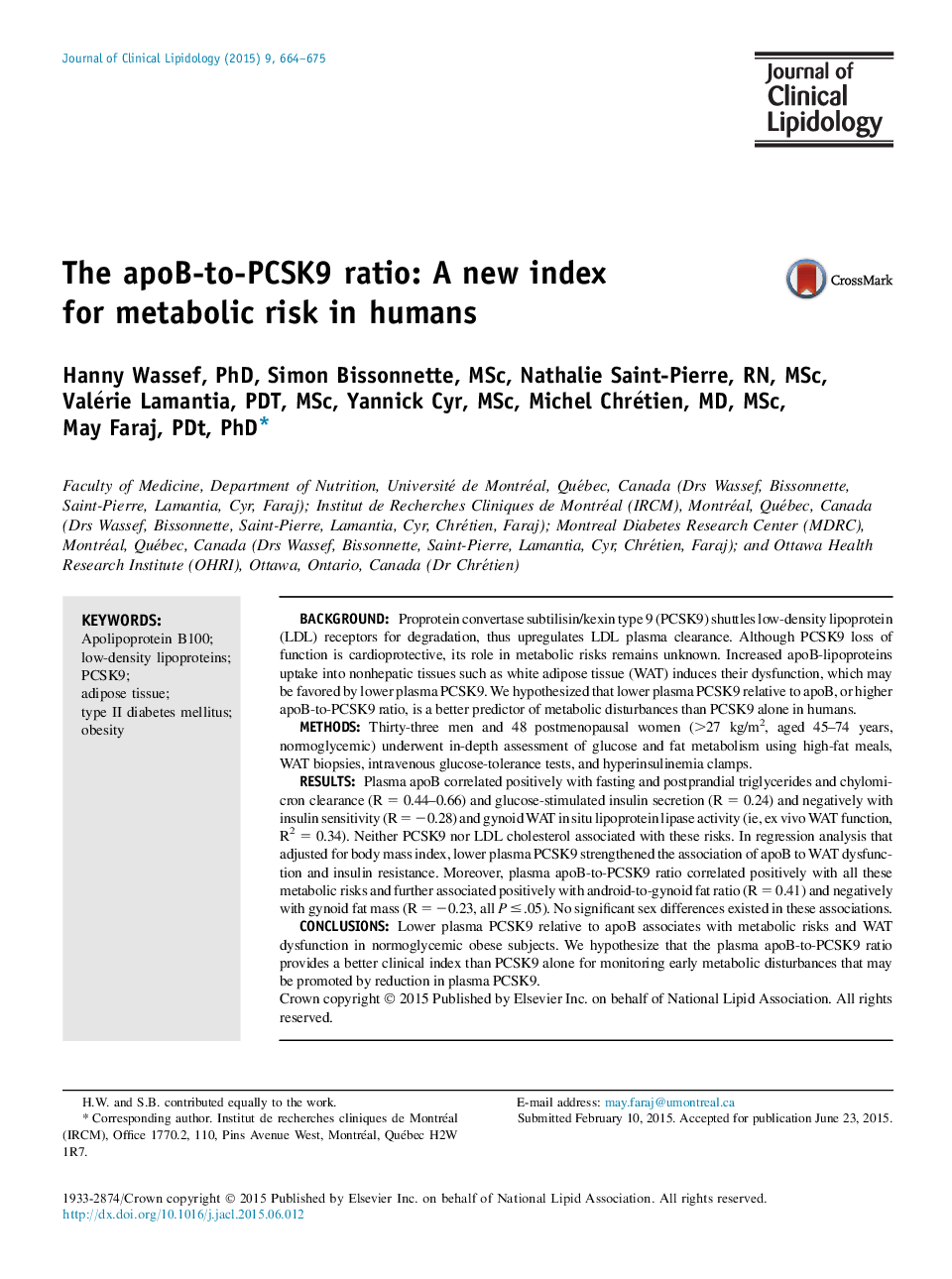| کد مقاله | کد نشریه | سال انتشار | مقاله انگلیسی | نسخه تمام متن |
|---|---|---|---|---|
| 2965874 | 1178785 | 2015 | 12 صفحه PDF | دانلود رایگان |

• Eighty-one obese normoglycemic men and postmenopausal women were studied.
• Plasma apoB correlated positively with dysfunction in glucose and fat metabolism.
• Reduced plasma PCSK9 increased the association of apoB to metabolic risks.
• Plasma apoB-to-PCSK9 ratio, not PCSK9 alone, associated with metabolic risks.
BackgroundProprotein convertase subtilisin/kexin type 9 (PCSK9) shuttles low-density lipoprotein (LDL) receptors for degradation, thus upregulates LDL plasma clearance. Although PCSK9 loss of function is cardioprotective, its role in metabolic risks remains unknown. Increased apoB-lipoproteins uptake into nonhepatic tissues such as white adipose tissue (WAT) induces their dysfunction, which may be favored by lower plasma PCSK9. We hypothesized that lower plasma PCSK9 relative to apoB, or higher apoB-to-PCSK9 ratio, is a better predictor of metabolic disturbances than PCSK9 alone in humans.MethodsThirty-three men and 48 postmenopausal women (>27 kg/m2, aged 45–74 years, normoglycemic) underwent in-depth assessment of glucose and fat metabolism using high-fat meals, WAT biopsies, intravenous glucose-tolerance tests, and hyperinsulinemia clamps.ResultsPlasma apoB correlated positively with fasting and postprandial triglycerides and chylomicron clearance (R = 0.44–0.66) and glucose-stimulated insulin secretion (R = 0.24) and negatively with insulin sensitivity (R = −0.28) and gynoid WAT in situ lipoprotein lipase activity (ie, ex vivo WAT function, R2 = 0.34). Neither PCSK9 nor LDL cholesterol associated with these risks. In regression analysis that adjusted for body mass index, lower plasma PCSK9 strengthened the association of apoB to WAT dysfunction and insulin resistance. Moreover, plasma apoB-to-PCSK9 ratio correlated positively with all these metabolic risks and further associated positively with android-to-gynoid fat ratio (R = 0.41) and negatively with gynoid fat mass (R = −0.23, all P ≤ .05). No significant sex differences existed in these associations.ConclusionsLower plasma PCSK9 relative to apoB associates with metabolic risks and WAT dysfunction in normoglycemic obese subjects. We hypothesize that the plasma apoB-to-PCSK9 ratio provides a better clinical index than PCSK9 alone for monitoring early metabolic disturbances that may be promoted by reduction in plasma PCSK9.
Journal: Journal of Clinical Lipidology - Volume 9, Issue 5, September–October 2015, Pages 664–675